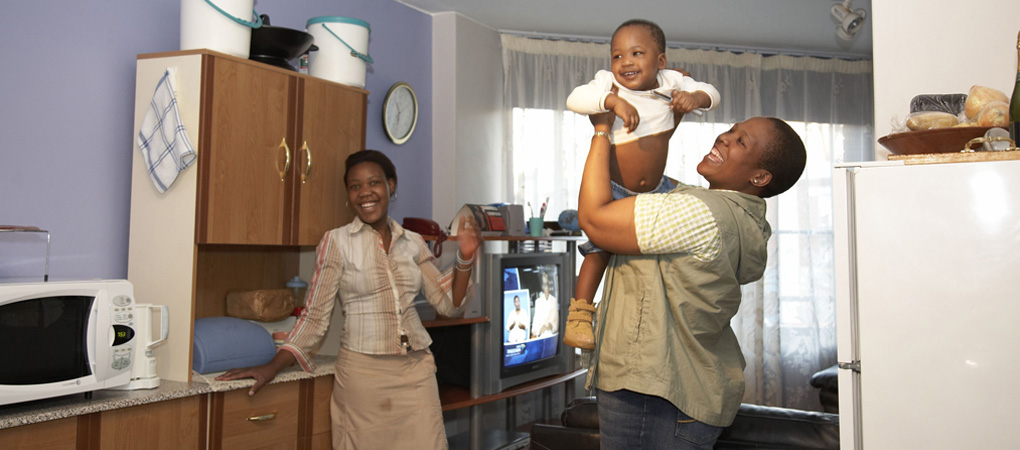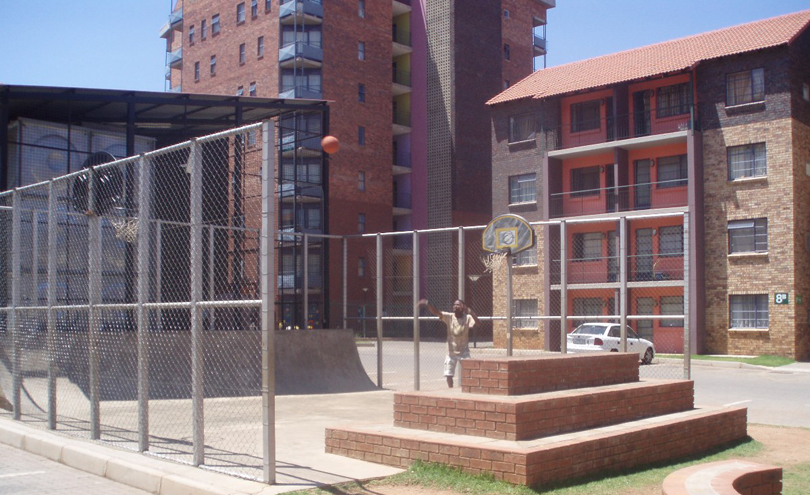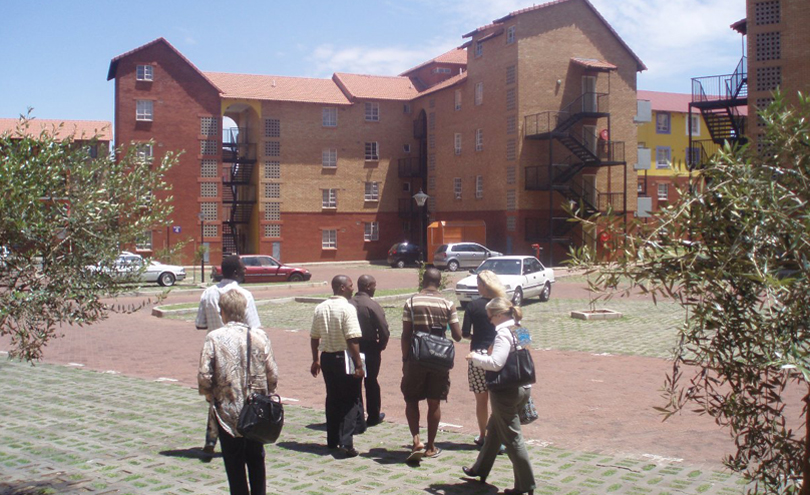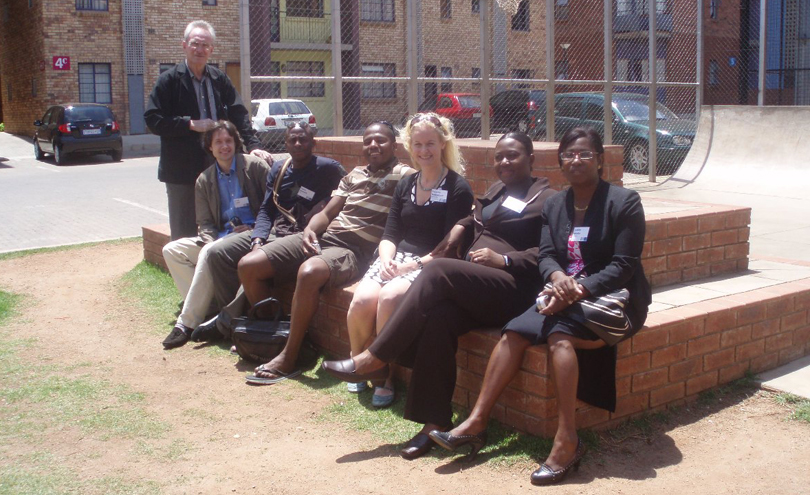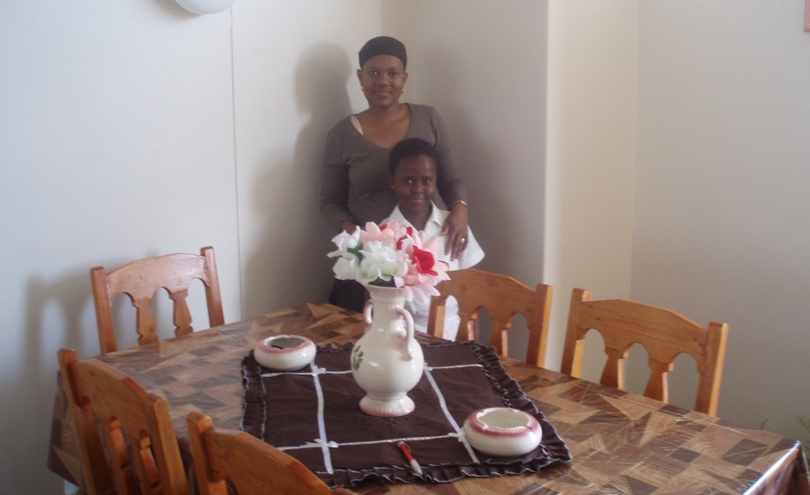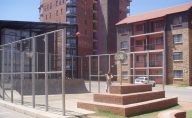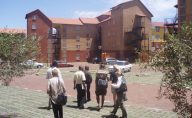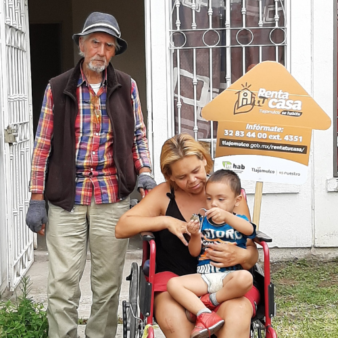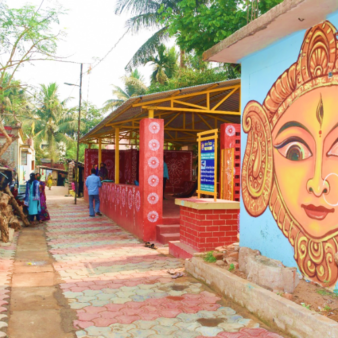The work of Johannesburg Housing Company (JHC) involves the development and adaptive re-use of city-centre buildings to deliver mixed-tenure, affordable rental housing whilst acting as a trigger for the regeneration of the surrounding area. To date JHC has provided nearly 3,000 homes in 24 buildings, adding a further eight per cent to the residential stock of Johannesburg’s inner city.
Project Description
Aims and Objectives
- To provide quality accommodation, superior management and client satisfaction in the provision of social housing, bolstering urban regeneration wherever possible.
- To achieve planned incremental growth in order to achieve long term sustainability of social housing provision.
From its origins with the discovery of gold in the late 1880s, Johannesburg has always been a divided city. After the first democratic elections in South Africa in 1994 there was a significant change in the inner city profile, both economically and racially. As poor workers moved into the city centre to be near their places of employment, rich white-owned industry and commerce moved out, leaving many empty or squatted buildings in their wake.
Many buildings were abandoned to slum landlords and gangsters who collected rent from these under-maintained and overcrowded units that were also used as centres for criminal activity. Non-payment for services led to the cut-off of utility services. Neighbourhoods deteriorated with the absence of basic social services including health facilities, policing and functioning water, electric and sanitation utilities. Increasing corporate debts to banks led to the refusal of loans for property development or ownership in the inner city, considered too high a risk. This became known as ‘red-lining’, and the area was in spiralling decline.
Johannesburg Housing Company (JHC) was initiated in response to this situation and began working for the re-creation of an environment of order, trust, good governance and dignity in the inevitable turmoil of the transition to democracy.
JHC acquires housing stock by refurbishing derelict buildings and converting disused offices and hotels into residential space. To date JHC has successfully renovated/built nearly 3,000 homes in 24 buildings, adding a further eight per cent to the residential stock of Johannesburg’s inner city. Some 8,500 men, women and children now have a home through JHC and the city tax income has increased as these once derelict buildings are now productive contributors to the city’s tax base and have helped to regenerate the urban area.
From a cautious start JHC has progressed to refurbishing inner city slums and developing large scale new build developments and has recently begun to address issues of energy saving and efficiency. It has continuously formed partnerships and made alliances with a variety of housing organisations, banks, overseas funding organisations and various spheres of government, including the City of Johannesburg and the Johannesburg Development Agency.
All developments are mixed-income with 50 per cent of the residents falling within the government’s subsidy entitlement maximum income of R3,500 per month (US$500). Pioneering participation and management processes have been instituted. Tenants committees are encouraged in all the buildings. There is a culture of cleanliness and order. Rules are laid down, accepted and adhered to. A culture of prompt rental payment has been established. Community development workers are employed to help build the capacity for community empowerment. Training programmes and social support (e.g. crèches for working mothers) are also provided.
Only local planning and design firms are used, but international groups have provided input on JHC project. JHC runs workshops to discuss the design and its impact on the long-term comfort of the residents, as well as the management and maintenance of the residential buildings. JHC awards contracts on the basis of proposal calls and decisions are made by an independent adjudication panel.
Funding has been drawn together from a number of sources:
- The European Union donated R62,6 million (US$8,3 million) over a five year period as start-up funds. These funds were channelled via the Kagiso Trust, a leading South African NGO
- The Flemish Regional Government donated R13 million (US$1,73 million), These funds were channelled via NewHco, a leading South African developer of low income housing .
- Housing subsidy worth R35 million (US$4,67 million) is provided by the South African government through the Provincial Housing Department.
- R55 million (US$7,33 million) in commercial bank loans have been provided for a new-build development.
Soft loans have been obtained from large companies interested in supporting urban regeneration (e.g. Anglo-American, AngloGold Ashanti and Apexhi) where JHC is acting as a social entrepreneur using other people’s risk-taking funds.
The initial start up capital grant of R62,6 million (US$8,3 million) is now worth R262 million (US$34,9 million).
Over ten years the value of the government subsidy has declined, but rather than decrease the size of the unit JHC has compensated by developing mixed income developments that encourage cross subsidisation of the lower income units.
Since 2003, JHC’s rental income has met all its operating costs. It is not expected that there will be any deterioration in this position. Surplus income in the last two years has been reinvested in the organisation’s assets (staff and buildings).
The JHC vision of social housing includes encouraging tenants to participate in managing their housing and in maintaining the standards in their buildings. Focus groups of tenants are brought together before any new build or renovation project to identify requirements.
Soon after tenants move into a new building, JHC community development staff hold a general meeting with tenants and encourage them to form a representative committee. Over 1,000 tenants have been on various training courses and all buildings have committees, which operate under a tenant committee constitution. Participation tends to vary and interest tends to be issue oriented, for example, a rise in involvement around rent increase time. The buildings tenants live in are secure, clean and well managed and the crime and social problems in the locality have been reduced.
The impact of JHC on the city of Johannesburg has been substantial. In many instances what were once liabilities for the city are now income generating assets. In 2005 JHC paid R5.4 million (US$ 895k) to the City for rates and services and is now one of the city’s largest residential ratepayers. In what were once run down inner city areas JHC buildings are always clean and well maintained and easy to see and this has had an impact on adjacent buildings, showing a pronounced ripple effect of urban regeneration. The project has led to greater investor confidence in the City of Johannesburg.
Why is it innovative?
- Adaptive re-use of empty buildings in city centres for mixed tenure, including low cost affordable rental.
- Using efficient methods of management, and running at an operational surplus .
- Renovation of a property by JHC is a trigger for urban regeneration of the surrounding area.
- Development of community focused programmes and tenants committees to encourage social interaction and integration.
- A culture of cleanliness and order and prompt payment has been insisted upon to ensure the continuing quality of the developments.
- Introduction of an innovative contract (based on the British NEC) which allows JHC to directly employ its own professionals to manage the construction process.
- First structured finance package for a social housing project, bringing in a combination of equity and debt.
- Recognition that low income people do not need to be housed in low cost buildings and the use of whole life costing for components to ensure higher quality.
What is the environmental impact?
Many of the residential buildings owned and managed by JHC were former abandoned and disused inner city properties, which have been converted to provide residential accommodation. This has avoided the use and transportation of new construction materials etc.
A range of initiatives has been introduced to reduce energy consumption in JHC buildings. These include:
- Insulation of boilers and energy management systems to avoid use at peak priced times, lowering of thermostats to achieve optimal electricity consumption. This all leads to reduced energy bills for residents.
- A solar energy system has been installed at one of the multi-storey development (Smitshoff), which has 118 apartments. This provides all the energy that is required to heat the water, which is stored in insulated tanks. It is only necessary to use a back-up system on overcast days.
- Use of energy-efficient light bulbs and day-night sensors.
The ripple effect of urban regeneration has led to an improved living environment in the areas around JHC buildings. Plans are underway to develop green areas in neighbourhoods where there are several JHC properties.
Is it financially sustainable?
All of JHC’s activities are funded from the rental income that it receives from the buildings that it has developed to date. There have never been arrears or vacancy levels above five per cent. In 2006 arrears were 0.0019 per cent and vacancy rates were 1.6 per cent. The use of mixed income has reversed the apartheid geography in the area.
Asset building is the framework being used for community development. This approach to poverty alleviation helps tenants to develop and combine a series of assets, including physical assets such as savings, home ownership and pensions and non-physical assets such as life skills, education and training. To encourage this there is a strong focus on early childhood and youth development activities.
It has been possible over time to move away from a grant-funded model to one which allows for a funding mix, including self-generated income and capital, to service the target groups.
An initial grant of R74 million (US$ 9.8 million) has been grown into a mix of assets worth R262million (US$ 34.9 million). Rental income has covered operating costs since 2003 and a surplus is now being generated and reinvested.
JHC provides work for over 1,000 contractors in maintenance, cleaning and security services and many contractors in specialised functions such as plumbing and electrical services have benefited from JHC’s black empowerment procurement policies. These policies help those who were particularly disadvantaged under the apartheid administration. Forty-eight per cent of service providers fall under this category, earning about 82 per cent of building management expenditure. In 2005 JHC paid R4.6 million (US$ 726,000) to outsourced service providers. A substantial number of jobs have been created in the industry. Contracts have created opportunities for outsourced companies used to provide training for approximately 300 people.
With the provision of nearly 3,000 housing units to date, the supply of housing in the city has been increased by eight per cent.
What is the social impact?
JHC’s approach has been underpinned by a commitment to redress the destructive legacy of apartheid. The urban regeneration is part of creating a just and democratic urban environment. It is about imagining and creating what has never been experienced – a ‘normal’ de-racialised urban landscape.
Tenant involvement in the community development work of JHC has been greater than in building management and more sustained. The community development programme started in earnest in 1999 with the appointment of the first community development officer. By 2005 it had been formalised into a dedicated organisation (Makhulong a Matala) employing two professional community development staff and 15 facilitators chosen from the volunteers working in the Makhulong programmes in each building. This structure will permit donations to be tax deductible.
JHC’s approach of housing different ethnic groups as well as non South Africans in their housing developments has been successful in encouraging multi-cultural integration. Inter-building soccer and netball leagues involve over 400 young people in organised sporting activities. Over 1,000 tenants have been on various training courses on childcare, HIV/AIDS, financial planning and home maintenance. After school care is being piloted in three buildings to help improve the children’s performance at school.
High priority has been placed on training and development of the JHC staff. All staff take part in an on-going training programme at both company and individual level. Exchange programmes with social housing institutions in Europe and USA serve to further develop staff, previously unknown to have had any training or skills development in the low-income residential property sector.
A significantly increased level of safety within the buildings for residents is provided through caretaking and concierge systems. Neighbourhood safety is also being addressed in an area where JHC owns three buildings on one street and has the opportunity to acquire three more. It has encouraged the owners of 26 of the 33 buildings in the area to work together to bring about a safe, clean and well-serviced precinct. The City has undertaken to clean the streets and JHC will be ensuring tenants don’t throw rubbish from windows and will repair leaking sewers. Security is enhanced to limit access. The next stage is to improve neighbourhood facilities such as telephones, convenience stores, green spaces and lighting. In 2004 and 2005 a ‘Safe New Year’ campaign has been run successfully involving all 26 buildings and the local authority. This resulted in the ‘quietest’ celebrations in many years.
Strong emphasis has been placed throughout all the organisation’s activities on supporting the empowerment of black people, to begin to redress some of the impacts of the apartheid regime:
- A culture of involvement in decision making in respect of management of housing and in community development activities is being gradually developed.
- Training is being provided in a range of skills to assist people take on more active roles in society.
- Procurement of services from, and capacity training for, companies led by black community members.
Barriers
Barriers encountered by JHC have included the following:
- An investment strike by major financial institutions and investors who didn’t want to run the risks associated with inner city residential letting. This was overcome with a good track record over time (high repayment levels, low void rates, increasing value of the well-maintained properties).
- Poor management practices where buildings were managed by strong-arm tactics. A different management style was introduced by JHC – based on an acknowledgement of values, mutual rights and responsibilities, recognition of customer service and a rapid response time to maintenance problems. Given the successful results these methods are being increasingly adopted by other landlords.
- The professional mindset of designers and architects that said low-income housing meant low cost construction and inferior standards. Over time and with the introduction of project management processes, which place value at the centre of the contractual relationship, JHC has established a best practice regime, which places comfort and best value over a 20-year life span at the centre of the design and construction process.
- Slow and cumbersome regulatory systems. These were not easily overcome, but sufficient time and resources have to be budgeted to deal with them correctly.
- By-law enforcement is arbitrary and inefficient. This has led to unhealthy and illegal uses of the streets, pavements, and alleyways. JHC buildings stood out as quality accommodation in severely degraded areas. Engagement with local officials and councillors has helped to combat this.
Lessons Learned
- Well constructed, well managed buildings which deliver value for money to low income tenants who are viewed as clients leads to a culture of payment and participation.
- Investment in training of staff and systems are vital to ensure good and efficient service
- Given the capital-intensive nature of housing development, gearing debt is the only way to deliver housing at the scale required for inner city regeneration. Acceptable returns can be made if housing projects are well-managed.
Evaluation
Monitoring and evaluation are an integral part of JHC operations. Monthly reports are provided on leasing, arrears, maintenance, lift stoppages, security, cleaning and social issues. Once a year this information is assessed as part of the internal annual strategic review process. An annual financial audit is undertaken by the JHC’s auditors.
Tenants complete entry and exit interviews, which are assessed quarterly and there is an annual independent customer service survey, a customer needs survey and an annual rent survey in areas where JHC operates.
There are occasional external valuations undertaken by donors such as the EU. In their final evaluation of the project in 2001 they described JHC as:
‘A national treasure … there is no other social housing organisation in South Africa that has anything like the learning, skills and capacity that JHC has’.
Transfer
Starting its activities ten years ago with one building, JHC now owns and manages 24 buildings providing homes to 8,500 persons. It is able to source a variety of funds, grants, debt and equity. Its financial model and management practices will allow for continued development of slums and the rehabilitation of abandoned buildings. In addition, 200 units are in the process of being refurbished and 1,300 units in 12 buildings are under investigation for potential acquisition and development.
The work of JHC has influenced other local projects where similar models are being replicated. The pioneering work of JHC in the urban development context has been recognised as good practice and is being used elsewhere in South Africa.
JHC’s standards of management and maintenance are highly respected, and it is considered as an equal partner with social housing providers in Europe and North America.
A pioneering use of the housing grant and the financial structure which JHC developed around it in 2003 provided the framework for a new national government rental housing policy.
Partnership
Private sector, professional, Donor agency, national government, local community

